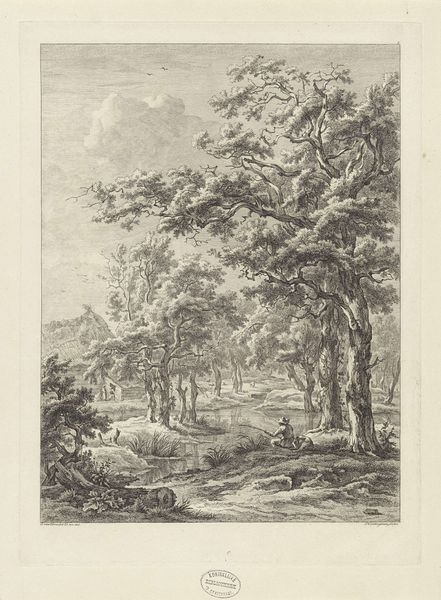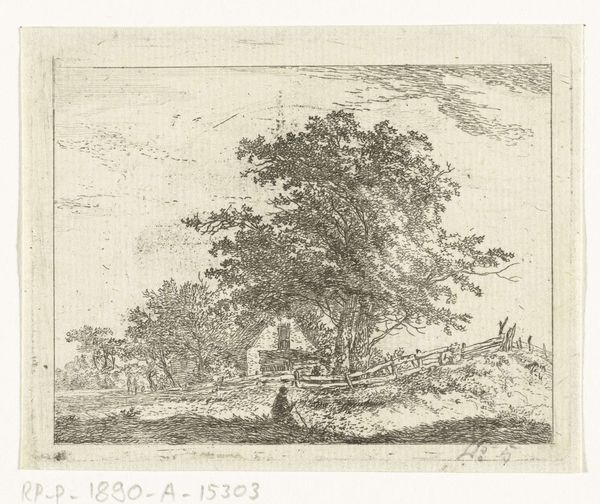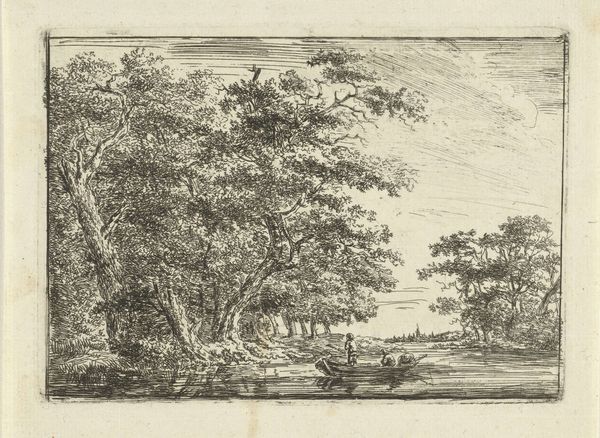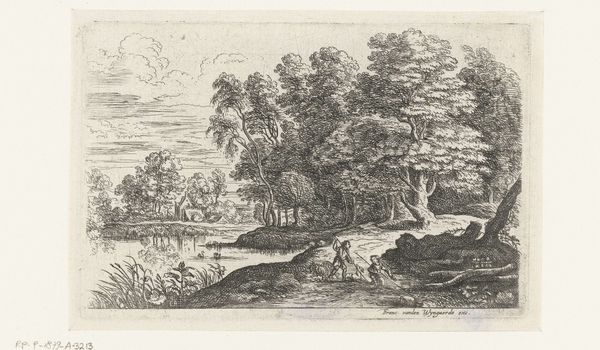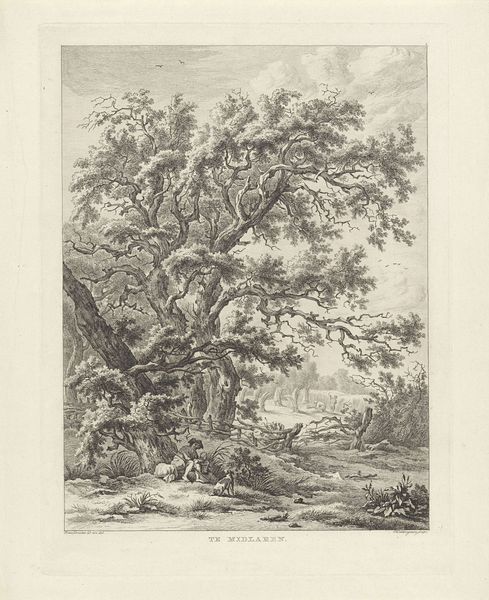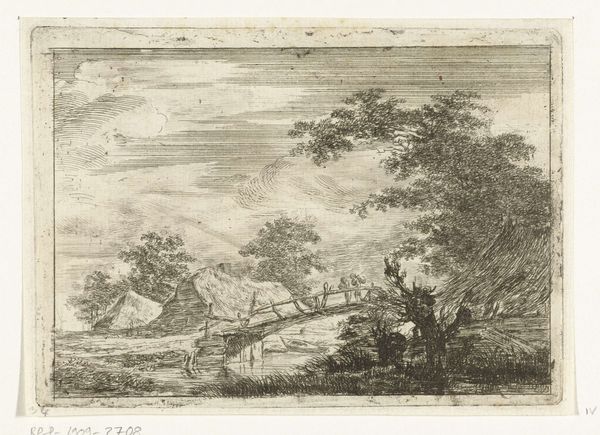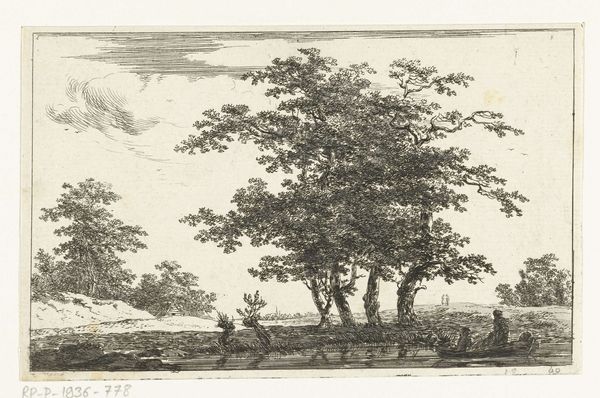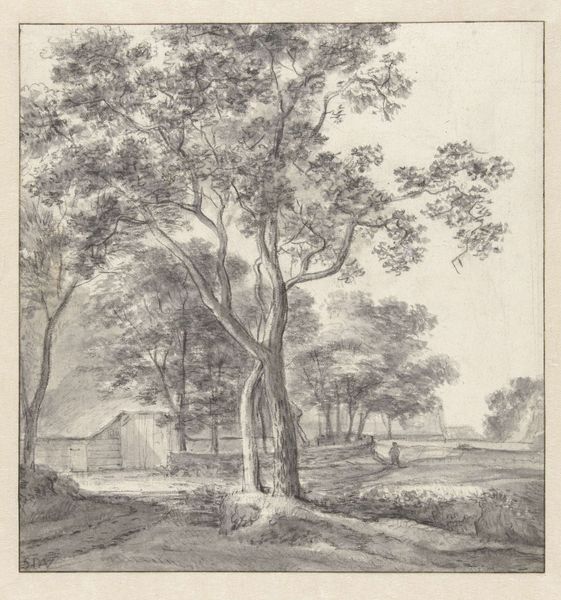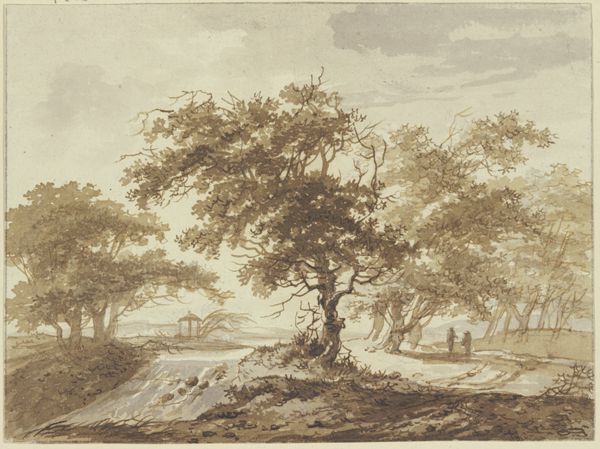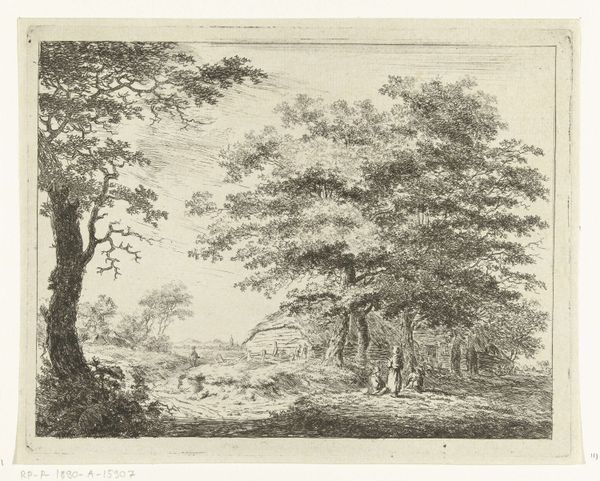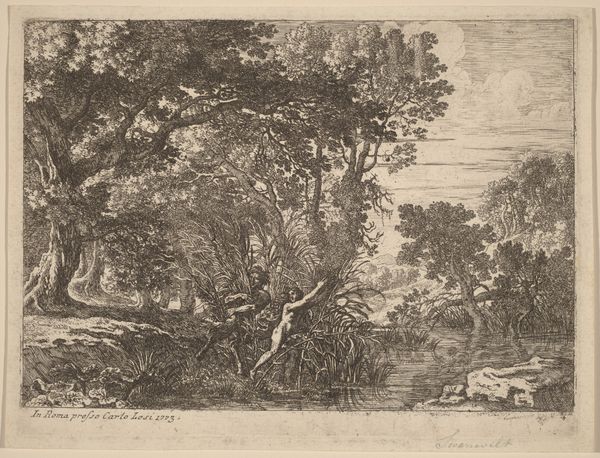
print, etching
# print
#
etching
#
landscape
#
etching
#
romanticism
Dimensions: height 176 mm, width 173 mm
Copyright: Rijks Museum: Open Domain
Editor: This etching, "Drie figuren op een bruggetje voor een huis," created by Hermanus van Brussel before 1815, gives me a sense of quiet observation. It's almost as if we're peeking into a serene, ordinary moment. What draws your attention in this landscape? Curator: I’m immediately struck by how this idyllic scene belies the tumultuous sociopolitical context of its time. Consider its creation, before 1815, during the decline of the Dutch Republic and the rise of Napoleon. How does van Brussel use the conventions of Romantic landscape to either reinforce or perhaps subtly critique the dominant power structures? Is the emphasis on nature an escape, a form of resistance, or something else entirely? Editor: Resistance? That's not something I would immediately think of. How does the natural scene factor into power structures? Curator: Landscape painting has historically been tied to ideas of ownership and control of land. Think about who owned land at the time, who had access to it, and who was excluded. Consider how van Brussel portrays the relationship between the figures and their environment. Are they harmoniously integrated, or are there hints of alienation? Who are those figures in the scene? Editor: Now that you point that out, it does look like there are more figures depicted near what may be the entrance to the house, maybe there is implied labor happening nearby? Curator: Precisely. And thinking about these figures opens up questions about class, gender, and social mobility within the landscape. It's not just about a pretty view, but also about power dynamics inscribed within it. Editor: So by analyzing what is included, we can learn more about the culture and potentially van Brussel’s attitudes toward social structure at the time? I never really thought about landscapes in this way before. Curator: Exactly! By looking through an intersectional lens, we can see how art acts as a mirror reflecting the complex realities of the world it inhabits, while offering us space to engage in dialogues about the world. Editor: Thanks, I am definitely going to look closer at social contexts from now on!
Comments
No comments
Be the first to comment and join the conversation on the ultimate creative platform.

